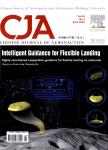版权所有:内蒙古大学图书馆 技术提供:维普资讯• 智图
内蒙古自治区呼和浩特市赛罕区大学西街235号 邮编: 010021

作者机构:Chinese Academy of Sciences Shanghai Innovation Academy for Microsatellites Shanghai 201304 China University of Chinese Academy of Sciences Beijing 101408 China Institute for AI Industry Research (AIR) Tsinghua University Beijing 102200 China State Key Laboratory of Networking and Switching Technology Computer Science Department Beijing University of Posts and Telecommunications Beijing 100876 China
出 版 物:《Chinese Journal of Aeronautics》 (Chin J Aeronaut)
年 卷 期:2025年第38卷第7期
基 金:The project was funded by the Hong Kong-Macau-Taiwan Science and Technology Cooperation Project of the Science and Technology Innovation Action Plan in Shanghai China (23510760200) the Oriental Talent Youth Program of Shanghai China (No.Y3DFRCZL01) the Outstanding Program of the Youth Innovation Promotion Association of the Chinese Academy of Sciences (No.Y2023080) and the Strategic Priority Research Program of the Chinese Academy of Sciences - Category A (No.XDA0360404)
主 题:Orbital edge computing Ubiquitous computing Large-scale satellite constellations Computation offloading
摘 要:The number of satellites, especially those operating in Low-Earth Orbit (LEO), has been exploding in recent years. Additionally, the burgeoning development of Artificial Intelligence (AI) software and hardware has opened up new industrial opportunities in both air and space, with satellite-powered computing emerging as a new computing paradigm: Orbital Edge Computing (OEC). Compared to terrestrial edge computing, the mobility of LEO satellites and their limited communication, computation, and storage resources pose challenges in designing task-specific scheduling algorithms. Previous survey papers have largely focused on terrestrial edge computing or the integration of space and ground technologies, lacking a comprehensive summary of OEC architecture, algorithms, and case studies. This paper conducts a comprehensive survey and analysis of OEC’s system architecture, applications, algorithms, and simulation tools, providing a solid background for researchers in the field. By discussing OEC use cases and the challenges faced, potential research directions for future OEC research are proposed.